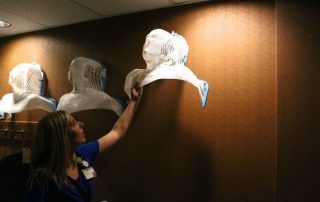Close to Half of American Adults Infected With HPV, Survey Finds
Source: www.nytimes.com Author: Nicholas Bakalar Date: 04/06/2017 More than 42 percent of Americans between the ages of 18 and 59 are infected with genital human papillomavirus, according to the first survey to look at the prevalence of the virus in the adult population. The report, published on Thursday by the National Center for Health Statistics, also found that certain high-risk strains of the virus infected 25.1 percent of men and 20.4 percent of women. These strains account for approximately 31,000 cases of cancer each year, other studies have shown. Two vaccines are effective in preventing sexually transmitted HPV infection, and researchers said the new data lend urgency to the drive to have adolescents vaccinated. “If we can get 11- and 12-year-olds to get the vaccine, we’ll make some progress,” said Geraldine McQuillan, an epidemiologist at the Centers for Disease Control and Prevention, and lead author of the new report. “You need to give it before kids become sexually active, before they get infected,” Dr. McQuillan said. “By the time they’re in their mid-20s, people are infected and it’s too late. This is a vaccine against cancer — that’s the message.” She and her colleagues also found that 7.3 percent of Americans ages 18 to 69 were infected orally with vHPV, and 4 percent were infected with the high-risk strains that can cause cancers of the mouth and pharynx. HPV is a ubiquitous virus, the most common sexually transmitted infection in the United States. About 40 strains of the virus are [...]


